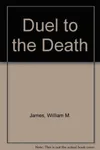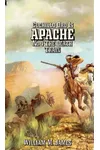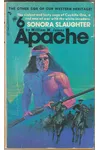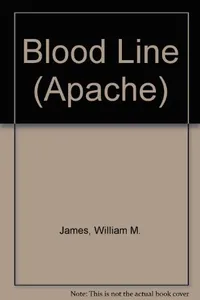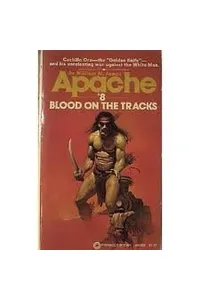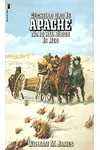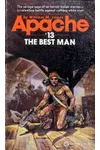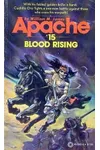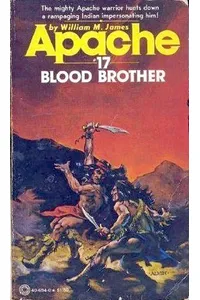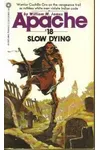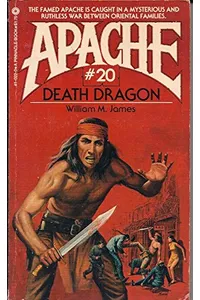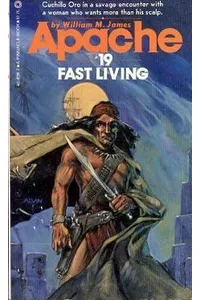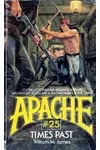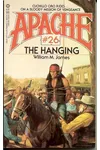Saddle up and step into the dusty, thrilling world of the Apache book series, where vengeance, honor, and gritty Western action collide! This 27-book saga, penned under the pseudonym William M. James by John Harvey and others, follows Cuchillo Oro, an Apache warrior whose quest for justice redefines the classic Western. Far from the typical cowboy tale, Apache offers a bold Native American perspective that still captivates pulp fiction fans.
With its raw energy and unflinching take on the Indian Wars, Apache isn’t just a series—it’s a time machine to the 1970s pulp era, blending heart-pounding action with a surprising depth of character. Ready to ride alongside Cuchillo? Let’s explore this Western gem!
How Apache Began
In the 1970s, British writers, including John Harvey, Terry Harknett, and Laurence James, teamed up as the Piccadilly Cowboys, churning out gritty Westerns under the William M. James pseudonym. Inspired by the success of violent series like Edge, Apache was born in 1974 with The First Death, published by Pinnacle. Harvey and his cohorts aimed to craft a saga that flipped the Western script, centering a Native American hero, Cuchillo Oro, in a genre often dominated by white cowboys. Drawing from historical figures like Geronimo, the series grounded its pulp thrills in the real tensions of the American frontier.
The Heart of Apache
The series kicks off with The First Death (1974), where Cuchillo’s wife and child are brutally killed by Lieutenant Pinner, a sadistic officer, sparking a lifelong vendetta. Knife in the Night (1974) follows Cuchillo as he hones his deadly skills, adapting to the loss of two fingers while hunting Pinner. Duel to the Death (1975) sees him falsely accused of murder, forcing a bloody escape to clear his name. Later, Blood Line (1976) deepens Cuchillo’s ties to his Apache heritage as he faces new foes.
Set in the 1860s Southwest, Apache blends visceral action—think arrow-pierced chests and knife duels—with themes of revenge, identity, and resistance. Unlike many Westerns that caricatured Native Americans as savages, the series portrays Cuchillo as a complex hero: educated, honorable, and fiercely protective of his people. The prose is lean and cinematic, perfect for fans of pulp fiction, yet it subtly challenges the genre’s stereotypes by humanizing the Apache struggle against encroaching settlers.
The series’ gritty realism and moral ambiguity set it apart. Soldiers are often depicted as cruel opportunists, while Cuchillo’s vengeance, though brutal, feels justified. This nuanced take, paired with relentless pacing, makes each book a quick, addictive read—usually under 200 pages of pure adrenaline.
Why Apache Resonates
Apache carved a niche in the Western genre by offering a Native American lens, a rarity in 1970s pulp fiction. Its sympathetic portrayal of Cuchillo and his people struck a chord with readers tired of one-dimensional “Injun” stereotypes. Though not a bestseller, the series’ cult status endures among Western enthusiasts, with rare paperbacks now prized by collectors. Its influence echoes in later works that prioritize diverse perspectives in historical fiction.
John Harvey’s early work on Apache also hints at his later success as a crime novelist, showcasing his knack for flawed, compelling characters. For fans, the series remains a thrilling relic of pulp’s golden age, proving that even niche stories can leave a lasting mark.
- About Apache
- Publication Years: 1974–1984
- Number of Books: 27
- Authors: John Harvey, Terry Harknett, Laurence James (as William M. James)
- Genre: Western, Historical Fiction
Ready to ride into the wild Southwest? Grab The First Death and dive into Apache’s unforgettable saga of vengeance and honor!


